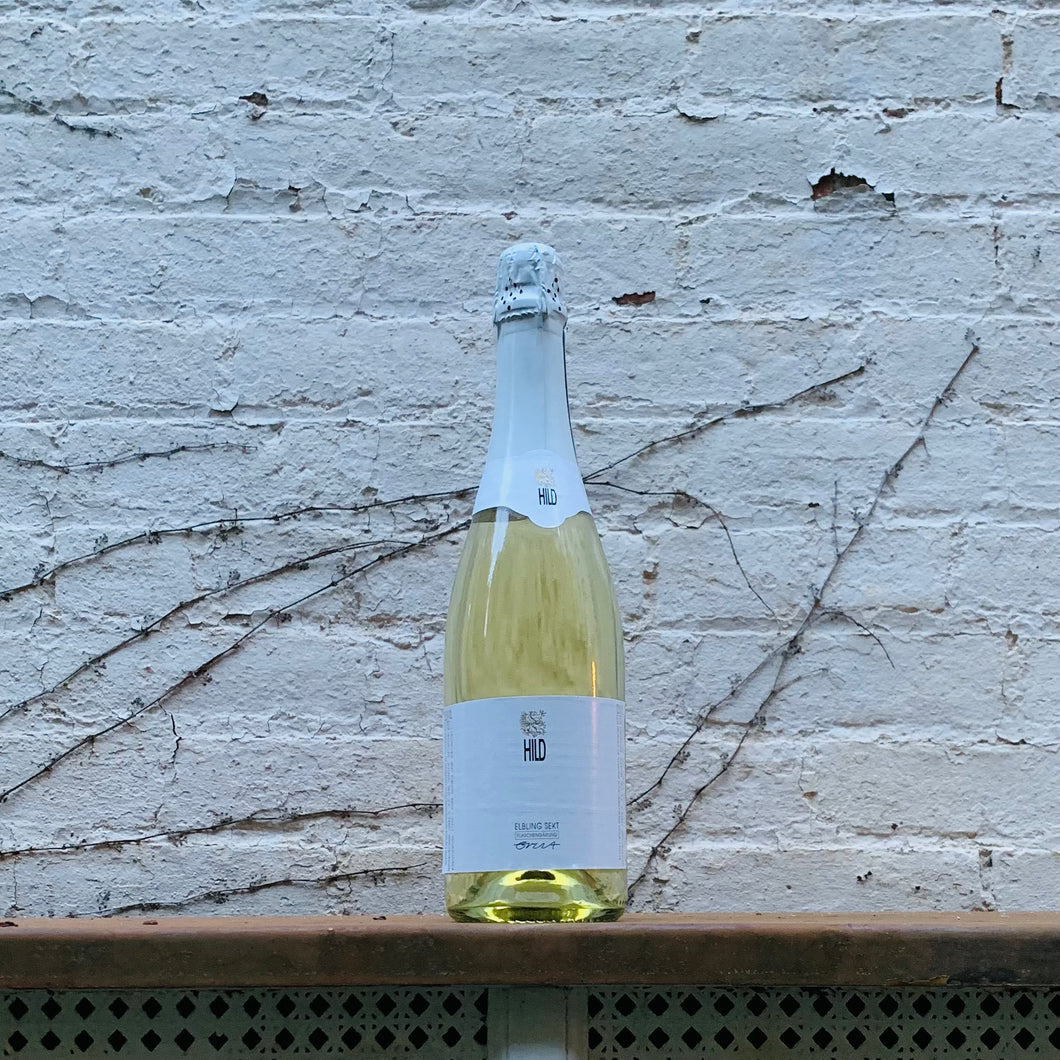
Hild - Elbling Sekt Brut NV
Regular price
$24.00
Sale
100% Elbling
Sustainable
Upper Mosel, Germany
From the importer-
The Germans would say "direkt" in describing the nose of Hild's Elbling Sekt Brut – Hild’s simpler sparkling cuvée. Lemon pith, quince, quinine, and sparkling water notes – all among the most thirst-quenching flavors one can imagine. The palate is a bit more saturating, a touch riper, though not much. We should still measure this wine in millimeters because the overall feel here is direct, sharp, refreshing. This is 100% Elbling which means high-acid and, at least in its home in the Upper Mosel, informed by a minerality (limestone) that is 180 degrees removed from anything we'd expect when you say that word "Mosel." This is a chisel meant to chip away at the sweltering parts of life, literal and figurative.
You’ve probably never heard of the “Upper Mosel.”
I really hadn’t either. I mean, I knew it was there. I just didn’t know what was there.
As it turns out, what is there has nothing to do with everything we’ve ever been taught about the Mosel. In other words, the Upper Mosel has nothing to do with Riesling and nothing to do with slate. Instead, we find limestone. The Upper Mosel in fact represents the beginning of the Paris Basin, the geological reality that informs places like Chablis and Sancerre. Instead of Riesling, in the Upper Mosel we find a winemaking culture based on one of Europe’s oldest grapes: Elbling.
It’s important to understand that Elbling here feels like something of a religion. It’s a culture, a regional dialect that is spoken through this wine of rigorous purity, of joyous simplicity, of toothsome acidity. Even at its best, Elbling is not a grape of “greatness” as much as it is a grape of refreshment and honesty and conviviality. The comparisons are plenty, though none of them are quite right: If Riesling is Pinot Noir, then Elbling is Gamay. If Riesling is Sauvignon Blanc, then Elbling is Muscadet. You get the idea. The joy of Elbling is the uncompromising vigor and energy, the raucous and super-chalky acidity. Matthias Hild, who farms about five hectares in the sleepy town of Wincheringen, told me that back in the 1980s, when he’d have an Elbling clock in at less than 8.5 grams acid, he’d taste it and question if it was Elbling at all. Which is sort of like saying you’re not sure the music is loud enough because your ears aren’t bleeding.
Matthias Hild reminds me of Randal Graham, the famous founder/winemaker of Bonny Doon, in his eclectic mix of scholar, advocate, farmer and trickster. He also sports a thinning pony tail and takes everything at his own pace and on his own terms. This strength of character likely explains some of how Hild has survived in the Upper Mosel making quality-minded, honest wines in a region where this is not a financially wise thing to do.
The fact that Matthias is single-handedly trying to save the old, terraced parcels of Elbling is a move that is equal parts romantic and completely insane. The financial realities of working these vineyards by hand while accepting their lower yields simply do not add up. This is an act of cultural preservation more than anything else. He calls the wine “Zehnkommanull” which means simply 10% — the wine always ferments bone dry and is 10% ABV or less. The few cases that I’m able to get of this wine are, to me at least, semi-sacred voices of a time long past. Sacred voices that end up on the $20-and-under table and most often overlooked.
Hopefully this will change. At the very least, you’re going to hear me shouting about this place.
